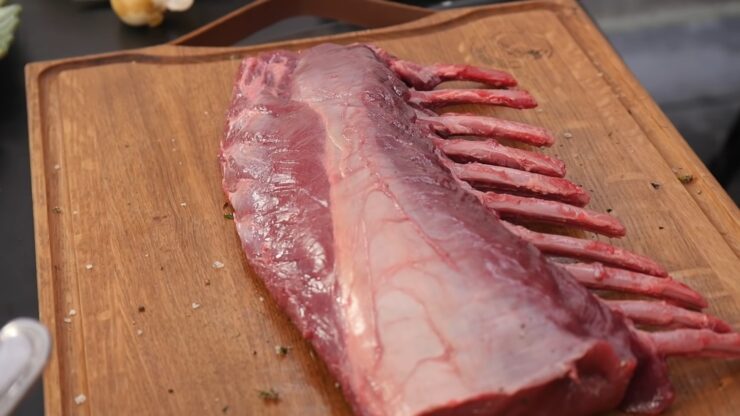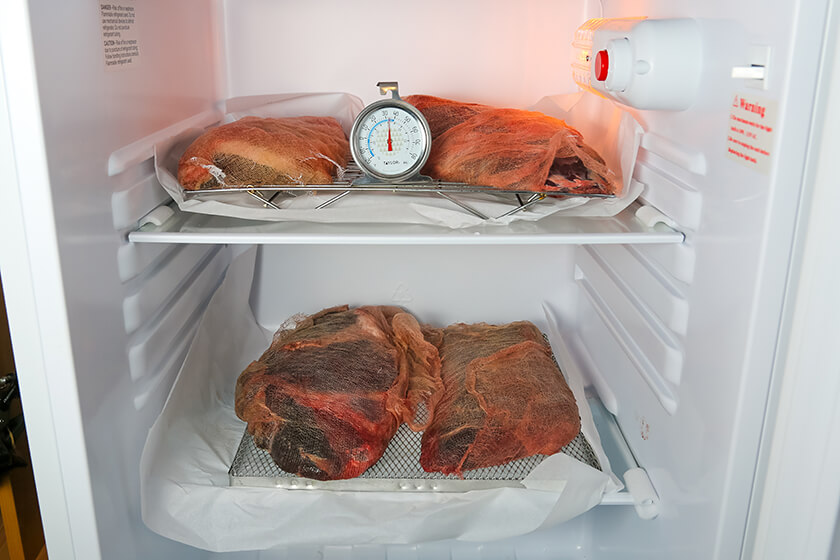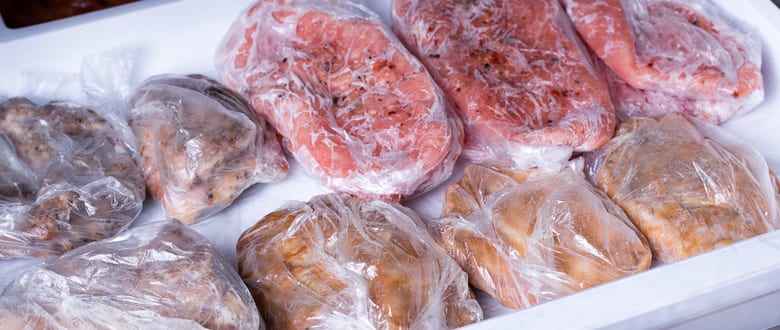Deer meat can stay fresh on ice for up to 3-5 days. Beyond this period, its quality starts to diminish.
Storing deer meat correctly is crucial for both safety and flavor preservation. Hunters and culinary enthusiasts alike understand the importance of keeping game meat at optimal temperatures to prevent spoilage. Deer meat, commonly referred to as venison, requires particular attention immediately after the hunt.
Cooling the meat rapidly by using ice is one of the most effective methods. This slows down bacterial growth and ensures that the venison remains safe to consume. Quick and proper field dressing, combined with the right temperature control, are key steps to enjoying your catch. Storing it on ice allows ample time for transportation or until you can properly process the meat for longer-term storage, such as freezing or refrigeration. It’s essential to keep the meat cold continuously, as temperature fluctuations can accelerate spoilage.
The Shelf Life Of Deer Meat On Ice
The Shelf Life of Deer Meat on Ice is a crucial topic for game hunters and meat enthusiasts. Preserving the freshness and safety of your venison is essential. The duration that deer meat can remain chilled on ice depends on various factors. Understanding these will ensure that your catch remains delicious and safe for consumption.
Factors Influencing Longevity
Different elements impact how long deer meat remains fresh on ice:
- Initial meat temperature
- Cleanliness of processing
- Frequency of ice replenishment
- Meat cut size
- Exposure to air
These factors contribute to the preservation period of deer meat. Freshly harvested meat cooled immediately lasts longer. Regular ice replacement is essential to maintain a constant cold temperature. Air exposure increases bacterial growth, reducing shelf life.
Ideal Temperature For Preservation
Keeping deer meat at the right temperature is crucial for longevity:
| Preservation Method | Ideal Temperature | Estimated Shelf Life |
|---|---|---|
| On Ice | Below 40°F (4°C) | 3-5 Days |
| Refrigeration | 34°F to 37°F (1°C to 3°C) | Up to 2 Weeks |
| Freezing | 0°F (-18°C) or Below | Up to 12 Months |
The ideal temperature for preserving deer meat on ice is below 40°F. This slows bacterial growth. A consistent, cold setting extends meat usability. Properly packaged venison can last up to 5 days on ice. For longer storage, freezing is recommended.

Credit: www.bowdonnd.com
Initial Processing And Its Impact
Understanding Initial Processing and its Impact is crucial for storing deer meat. The care taken in these early stages affects how long the meat remains fresh on ice. Let’s dive into the two most essential practices: Prompt Field Dressing and Proper Cooling.
Prompt Field Dressing
Immediately after a deer is harvested, field dressing should begin. This process involves removing the internal organs to prevent bacteria from growing. Quick action is essential. A delay can spoil the meat. Follow these steps:
- Clear an area to lay the deer for dressing.
- Use a sharp knife to make incisions and remove organs.
- Avoid puncturing the stomach or intestines to prevent contamination.
Proper Cooling Practices
After field dressing, cooling the deer meat is vital. The meat must be brought to a low temperature quickly to preserve it. The steps are straightforward:
- Place the deer in a shaded area or cooler.
- Fill body cavity with ice packs or bagged ice.
- Check often and drain water as ice melts.
These practices ensure that deer meat stays safe and flavorful for a longer period while on ice. The right methods from the moment of harvest to the cooling define the quality of the meat.
Safe Storage Techniques For Deer Meat
Proper storage is crucial to maintain the freshness of deer meat. It’s important to use the right techniques to ensure the meat remains safe and delicious. Whether you’re a seasoned hunter or new to processing game, understanding the best ways to store your venison is key.
Using Ice As A Preservative
Ice is a tried and tested method to preserve deer meat. To prevent spoilage, cover the meat entirely in ice. Change the ice regularly to maintain a consistent cold temperature. This is how you do it:
- Place the venison in a cooler.
- Fill with crushed ice to ensure full coverage.
- Cover the cooler lid tightly to maintain chill.
- Drain water as ice melts and add fresh ice.
Keep the cooler in a cool, shaded area to extend the ice’s lifespan.
Alternatives To Ice Storage
While ice is effective, other methods also keep deer meat fresh. Consider these alternatives:
| Storage Method | Description | Duration |
|---|---|---|
| Refrigeration | Maintain a temperature of 34°F to 37°F. | Up to 5 days |
| Freezing | Wrap tightly and freeze at 0°F or lower. | Up to 12 months |
| Vacuum Sealing | Remove air and seal to prevent freezer burn. | Up to 3 years |
Label each package with the date of storage to monitor its age. A key step is to avoid temperature fluctuations as they can cause spoilage.

Credit: www.gameandfishmag.com
Recognizing Spoilage In Deer Meat
Recognizing spoilage in deer meat is crucial for ensuring both safety and quality. Whether you’re a seasoned hunter or new to processing game, understanding the signs of meat going bad will help avoid foodborne illness and waste. Here’s how to identify when deer meat has spoiled.
Visual Inspection Cues
- Color changes: Fresh deer meat typically has a deep red hue. Spoilage may result in color shifts to greenish or brown tones.
- Presence of mold: Any fuzzy or slimy growth on the meat indicates spoilage and potential contamination.
- Surface texture: Meat should not have a slimy or sticky surface, which is a sign of bacterial growth.
Aroma And Texture Indicators
Detecting spoilage can also involve using your sense of smell and touch.
| Sense | Indicator | Action |
|---|---|---|
| Smell | An unexpected or foul odor instead of a clean, slightly iron-like smell. | Discard the meat to prevent foodborne illness. |
| Touch | A tacky or slippery texture. | Do not consume. Bacteria have likely multiplied. |
Health Guidelines For Consuming Deer Meat
Treating your family to deer meat means knowing safe practices from ice to plate. Proper handling ensures delicious meals without health worries. This post walks through the must-knows to enjoy venison confidently.
Safe Thawing Practices
- Never thaw meat at room temperature – This can lead to bacterial growth.
- Use the refrigerator for slow, safe thawing, allowing 24 hours for every 5 pounds of meat.
- Submerge meat in cold water if time is short. Change water every 30 minutes to keep it cold.
- Microwave thawing? Cook meat immediately after to prevent bacterial spread.
Following these steps keeps meat safe for cooking.
Cooking Temperatures To Ensure Safety
| Cut of Deer Meat | Minimum Internal Temperature |
|---|---|
| Steaks and Roasts | 145°F (and rest for 3 minutes) |
| Ground Deer | 160°F (no rest necessary) |
Use a meat thermometer to check temps. This avoids undercooking and kills harmful germs. Enjoy deer meat safely with proper thawing and cooking.

Credit: www.beststopinscott.com
Extending The Freshness Of Deer Meat
Excitement fills the air after a successful deer hunt, but the pressing question remains—how to keep that deer meat fresh? Understanding the best methods to preserve deer meat is crucial for those looking to enjoy their bounty for as long as possible. Proper storage techniques are the difference between savory meals and wasted spoils.
Vacuum Sealing For Longer Preservation
Vacuum sealing is an effective way to extend deer meat’s freshness. This process involves removing the air from the packaging before sealing it. Less air means less chance for bacteria to grow. Here’s how you can do it:
- Make sure the meat is clean and dry before sealing.
- Use high-quality vacuum bags to prevent tears and leaks.
- An airtight seal will keep out moisture and oxygen, two factors that speed up spoilage.
After sealing, deer meat can last for up to a year in the freezer. Remember to label the bags with the date. This helps track how long the meat has been stored.
Freezing: A Viable Option?
Freezing deer meat is another popular preservation method. It’s simple and convenient. Follow these tips to freeze deer meat correctly:
| Step | Instructions |
|---|---|
| 1 | Portion the meat to meal sizes for easier thawing. |
| 2 | Wrap in freezer paper or foil to prevent freezer burn. |
| 3 | Store at 0°F or colder to maintain quality. |
With these steps, deer meat can stay fresh in the freezer for 3 to 6 months. For best quality, consume within this timeframe. Freezing meat doesn’t kill bacteria, it just prevents growth. Once thawed, cook it promptly.
Frequently Asked Questions For How Long Can Deer Meat Stay On Ice
What Is The Shelf Life Of Deer Meat On Ice?
Fresh deer meat can be stored on ice for up to 3-5 days. However, this timeframe can vary based on the temperature of the ice and how frequently the ice is replenished. For optimal freshness, keep the meat at a consistent 32°F or just below.
How To Properly Store Deer Meat On Ice?
To properly store deer meat on ice, place it in a cooler with plenty of ice, ensuring water can drain to prevent soaking. The meat should be wrapped in plastic or placed in waterproof containers. Check and refresh ice daily to maintain a constant cold temperature.
Can You Refreeze Thawed Deer Meat Kept On Ice?
Refreezing thawed deer meat is generally not recommended, as it can affect the taste and texture. If the meat has been kept cold and handled properly on ice, and only partially thawed, it can be refrozen but should be consumed as soon as possible for best quality.
Is Deer Meat On Ice Safe For Extended Periods?
Deer meat on ice is not safe for extended periods beyond 5 days due to bacterial growth risks. After this period, it should be processed, cooked, or frozen to preserve its safety and quality. Always ensure that the temperature stays at or below 32°F to prolong safe storage.
Conclusion
Deer meat preservation is crucial for any hunter or outdoor enthusiast. Keeping it on ice properly extends freshness for up to two weeks. Remember to check the temperature regularly and maintain a consistent cold. For the best flavor and safety, timely processing and storage are key.
Enjoy your venison at its peak by following these guidelines.


